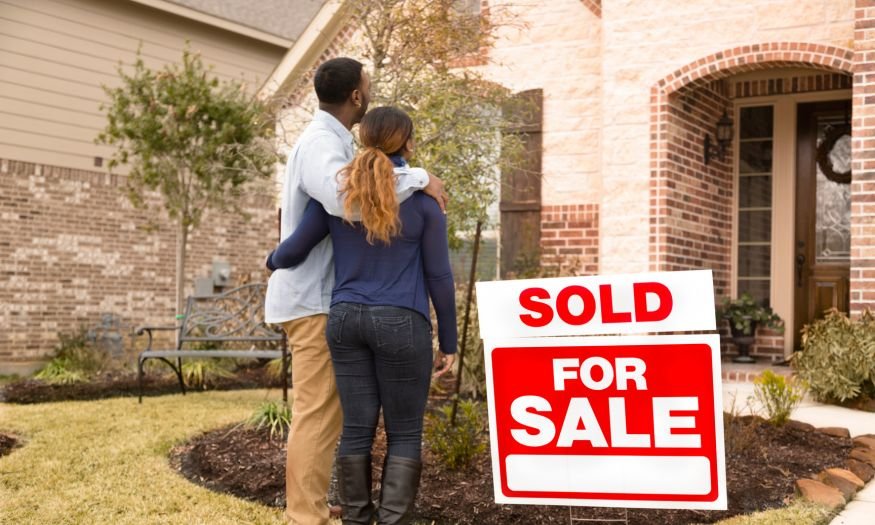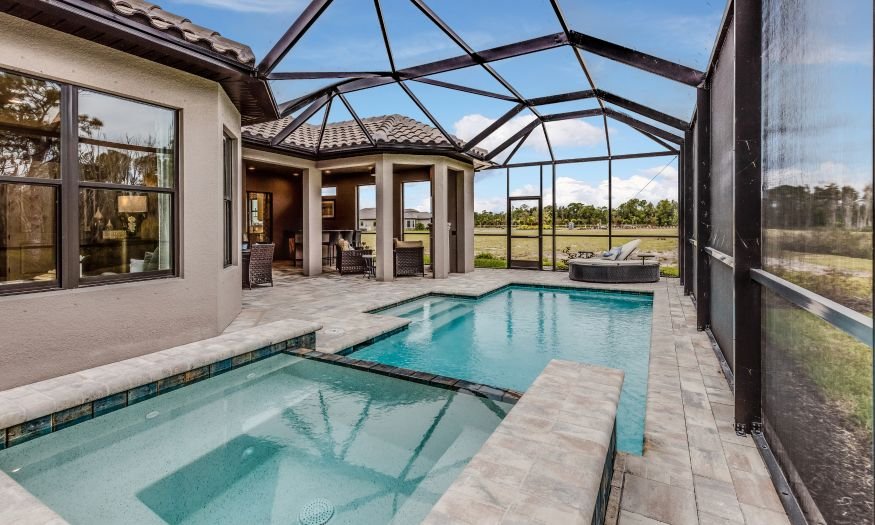
Buying a new home in Florida in 2024 is thrilling – from driving through lush golf course neighborhoods and touring sparkling modern homes to planning your route to the nearest Publix. However, beneath the surface, hidden costs can sneak up and strain your budget.
Florida remains a popular moving destination, but many buyers are unaware of the true cost of purchasing a new home. Unexpected expenses can quickly add up, potentially ruining the dream home experience. To help you avoid this, we’ve outlined some often-overlooked costs and provided tips on managing them effectively. This guide will ensure your investment stays sound, your home-buying journey remains smooth, and your excitement stays intact.
How Much Does a New Home Cost in Florida?
- What is the cost of a new home in Florida?
- How Much Does It Cost to Build a House in Florida in 2024?
- Hidden Costs of Building a New Home in Florida
- Tips for Managing Hidden Costs
- Real-Life Horror Story
- Final Thoughts
What is the cost of a new home in Florida?
When considering the purchase of a new home in Florida, it’s essential to understand the primary expense: the purchase price. This price varies widely based on several factors, including location, size, and the level of customization.
On average, the cost of a new construction production home in Florida ranges from $250,000 to over $500,000. Production homes are those built by larger builders using standard materials and floor plans, often in a larger community. Prime locations like coastal areas or popular cities can push these numbers higher. Understanding this base cost is crucial as it forms the foundation of your overall budget, ensuring you make a well-informed investment decision.
For sake of comparison, here’s the median price of a home listed for sale in various popular locations around Florida, according to Zillow:
- Miami: $575,859
- Sarasota: $464,097
- Naples: $609,044
- Tampa: $385,082
- Orlando: $386,917
- Pensacola: $266,546
- Daytona Beach: $266,067
- The Villages: $410,789
How Much Does It Cost to Build a House in Florida in 2024?

Building a new home in Florida in 2024 comes with a wide range of costs, primarily influenced by various factors such as location, construction materials, and design choices. On average, the cost per square foot for new construction ranges from $50 to $400, according to data from Quicken Loans. Given that the average home size in Florida is approximately 1,694 square feet, the total cost of an average custom built home can fall between $254,000 and $677,600.
Key Factors Affecting the Cost:
1. Location: The cost of building a home can vary significantly based on the location. Coastal areas and popular cities like Miami, Orlando, or Tampa often have higher land and construction costs compared to more rural areas. For some of the most affordable places to build a home in Florida be sure to check out our guide to Florida’s most budget-friendly retirement destinations.
2. Construction Materials: The choice between block and wood-frame construction can greatly impact the overall cost. Block-built homes, which are more common in Florida due to their durability against hurricanes, typically cost more than wood-frame homes.
3. Square Footage: Naturally, the size of the home is a major cost determinant. Larger homes require more materials and labor, thus increasing the total cost. Additionally, larger homes often require more sophisticated designs and structural considerations, which can add to the expense.
4. Desired Features: The features and finishes you choose can also significantly affect the price. High-end appliances, custom cabinetry, premium flooring, and luxury fixtures can quickly escalate costs. Energy-efficient designs, smart home technology, and outdoor amenities like pools or landscaping also contribute to the overall price.
5. Custom vs. Production Homes: Custom homes, which are designed and built to the owner’s specifications, tend to be more expensive than production homes, which are part of a larger development with standardized designs and materials. Custom homes offer more personalization but come with a higher price tag due to bespoke designs and potentially unique materials.
Hidden Costs of Building a New Home in Florida
The cost of a new home goes beyond the purchase price. Many buyers overlook additional expenses that can add up quickly and impact your budget. Being aware of these hidden costs is crucial for effective planning and ensuring your dream home remains affordable. Let’s explore these often-forgotten expenses and how to manage them effectively.
Hidden Cost #1: Upgrades and Extras
The model home you tour is often loaded with upgrades and extras not included in the base price. Features like high-end countertops, premium flooring, and custom cabinets can significantly increase the final cost. In Florida, where outdoor living spaces are highly valued, upgraded patios, pools, and landscaping can also add thousands to your budget.
If you opt for upgrades through the builder, you might face a higher price tag and a more limited selection than if you sourced these upgrades independently. Florida’s unique climate means you might need specific materials and features, like hurricane-resistant windows and enhanced insulation, which can be pricier through the builder.

Hidden Cost #2: Missing Essentials
Many new homes come without essential features like window coverings, appliances, fencing, and landscaping. In Florida, landscaping can be particularly costly due to the need for native, drought-resistant plants and irrigation systems. These missing items can add thousands to your budget.
Hidden Cost #3: Homeowners Association (HOA) Fees
If your new home is in a community with an HOA, be prepared for ongoing fees. These can cover amenities, maintenance, and community services but can also be a significant recurring expense.
In Florida, average HOA fees generally range from $100 to $350, depending on the community’s amenities and maintenance needs. However, in luxury areas, these fees can increase to $400 to $800 if the community offers significant enhancements like swimming pools, gatehouses, and clubhouses.
Hidden Cost #4: Property Taxes and Insurance
New homes often come with higher property taxes, especially if they are in desirable areas or have been assessed at a high value. The average effective tax rate in Florida is 0.80% (below the national average of 0.99%).
Florida’s average annual home insurance premium is $8,770, much more than the national average. That’s a whopping monthly premium of $730. Florida’s property insurance market has been dicey in recent years, with double digit increases in cost. Though, some financial rating agencies are reporting signs of improvement thanks to recent legislative changes.
Florida’s average annual home insurance premium is $8,770, significantly higher than the national average, according to Money Geek. This translates to a substantial monthly premium of $730. In recent years, Florida’s property insurance market has experienced double-digit cost increases.
On an optimistic note, some financial rating agencies are now reporting signs of improvement due to recent legislative changes.
Hidden Cost #5: Repair Costs
Even new homes can have defects. Issues like plumbing leaks, electrical problems, or structural defects can arise, leading to repair costs not covered by the builder’s warranty. Florida’s high humidity and frequent storms can exacerbate these problems, making thorough inspections even more critical.
Tips for Managing Hidden Costs
- Budget for Upgrades: Before signing the contract, make a list of must-have upgrades and get a cost estimate. Include a buffer in your budget for unexpected expenses.
- Clarify What’s Included: Ask the builder for a detailed list of what is included in the base price and what counts as an upgrade. This can help you avoid surprises when you receive the final bill.
- Research HOA Fees: Understand what the HOA fees cover and how much they will be. Factor these into your monthly housing budget.
- Get Multiple Quotes: For necessary additions like landscaping and window coverings, get quotes from independent contractors. This can often save you money compared to going through the builder.
- Schedule Inspections: Hire an independent inspector to check the home at various stages of construction and before closing. This helps catch any issues early when they are easier and cheaper to fix.
- Understand Warranties: Know what is covered by the builder’s warranty and for how long. Make sure you report any issues as soon as they arise to take full advantage of the warranty period.

Real-Life Horror Story
Buying a new home can be an exciting journey, but unexpected costs can quickly turn joy into financial despair. Here’s what happens when those hidden costs become all too real:
“We were so excited about our new home in Lakeland, but the final cost ended up being $30,000 more than we budgeted. The model home had so many must-have upgrades that we didn’t realize weren’t included in the base price.
Throw in insurance costs and our $200 HOA fee, and it’s safe to say we’re in a pretty tight spot!”
A couple’s joy quickly turned into financial despair. They fell in love with the model home’s high-end finishes, not realizing these were expensive upgrades. When the final bill came, they were $30,000 over budget, plunging them into debt and overshadowing the happiness of owning a new home.
What could have prevented this: Clarify what is included in the base price and what constitutes an upgrade. Create a detailed budget that includes potential hidden costs such as landscaping, window treatments, and appliances. Always ask the builder for a complete list of standard features versus upgrades.
Final Thoughts
By being aware of these hidden costs and planning for them, you can avoid unpleasant financial surprises and make a more informed decision. Proper budgeting and thorough research will help you enjoy your new home without breaking the bank. Florida’s real estate market can be both rewarding and challenging, but with careful planning, you can ensure your dream home doesn’t turn into a financial nightmare.

